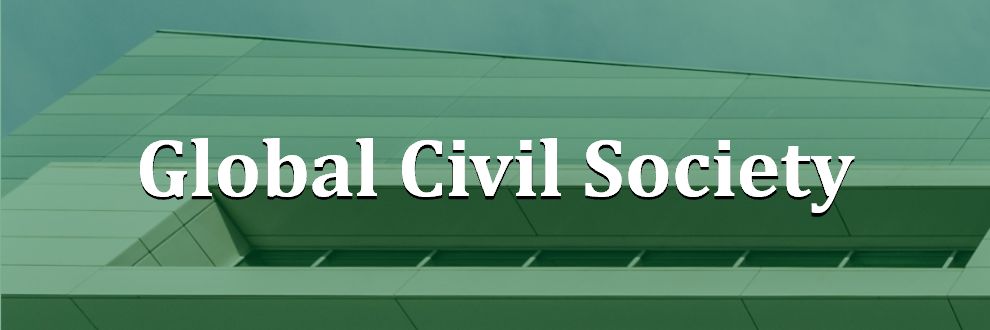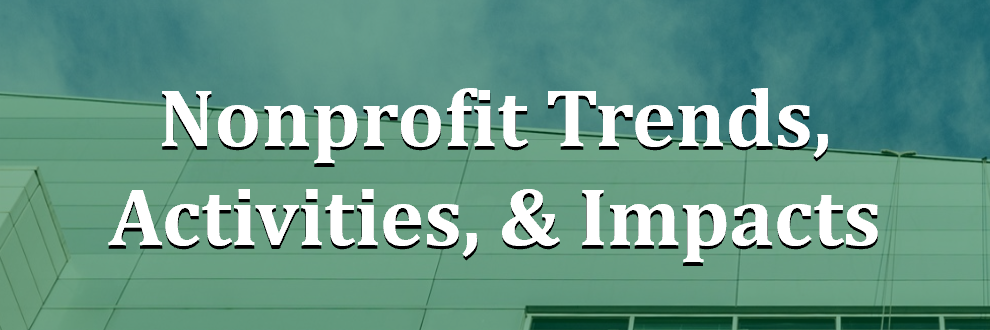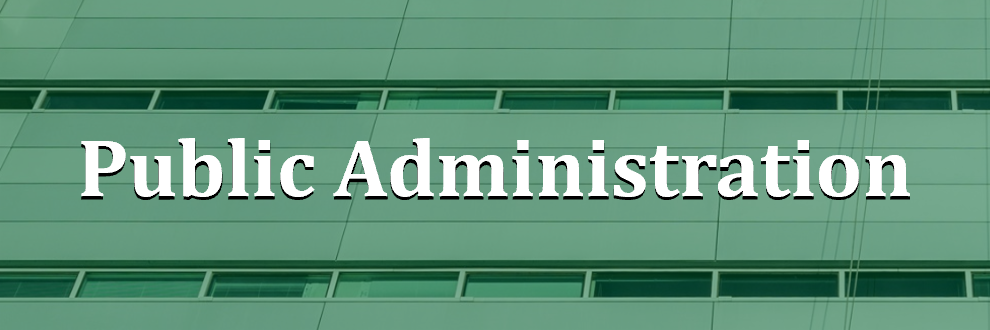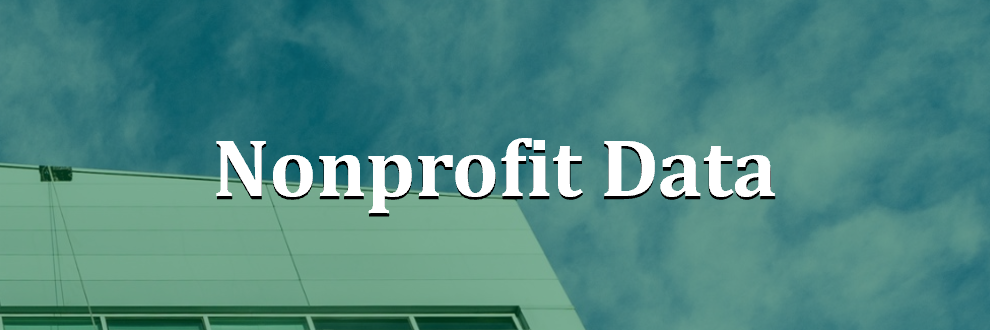Center faculty and staff are currently engaged in a variety of projects focusing on:
More information on these projects can be found below.
Global Civil Society
Government Relations and the Shrinking Space for Civil Society
Government relations continue to be one of the central determinants of nonprofit development globally. Recent work has explored relations between government and foundations (see this article in Voluntas) and sought to reframe key government-nonprofit relationship frameworks for a time in which the prevailing partnership is increasingly challenged (see this article in Nonprofit and Voluntary Sector Quarterly), as well as the regulatory and accountability aspects of the relationships (see this chapter). Additional work underway examines shrinking space in Western, democratic societies (see this special issue in Nonprofit Policy Forum) and prospects for NGO service providers to help revitalize democratization efforts combating the current global wave of authoritarianism (see the vol. 43, no. 1 special issue of Public Administration and Development).
Changing Policy Contexts for Nonprofit Management
This project will chart and analyze key policy developments affecting nonprofit management in both the U.S. and around the world. New opportunities due to growing civic engagement on social equity, climate, reproductive rights, and other global policy issues balance challenges to nonprofit organizations resulting from outdated regulatory frameworks, policy neglect–the unwillingness of governments to improve conditions and tax benefits, or political polarization challenging the legitimacy of nonprofits that are engaged in advocacy and value-based work in particular. One outcome will be a chapter for the 5th edition of The Jossey-Bass Handbook of Nonprofit Management and Leadership, published by John Wiley.
Nonprofit Trends, Activities, and Impacts
Nonprofit Trends and Impact 2021—National Findings on Nonprofits and Donations Trends, 2015-2020
Funded by the Generosity Commission, this study – conducted in partnership with colleagues at the Urban Institute and American University – provides new evidence about the nonprofit sector in two ways. First, it illuminates how changing patterns of charitable giving affect donations made to various types of nonprofit organizations. Second, and in recognition of constantly evolving trends, this national, survey-based study represents the first year of an ongoing panel study that researchers will be able to use to analyze the long-term effects of these and related trends through subsequent studies of this representative panel of nonprofit organizations over time.
Mapping and Assessing the U.S. Social Sector Infrastructure
This project is examining the national infrastructure – or support system – for nonprofit and philanthropic organizations in the U.S. The research is being conducted jointly by staff at George Mason University and the Urban Institute. The research team is currently gathering input from a broad range of stakeholders to develop several reports, including: a typology and map of the social sector infrastructure; an assessment of infrastructure financing; an analysis of the current state of the infrastructure; and recommendations for strengthening the infrastructure. For more information, see the project page on the Urban Institute’s website.
Nonprofit Entrepreneurship: What Do We Know, Where Are Our Current Data Gaps, and What Can a Multi-Disciplinary Approach Teach Us?
This project aims to highlight the state of our research knowledge regarding the broader dynamics of the nonprofit sector and the role these dynamics play in the vitality of the nonprofit sector. Nonprofit organizations are important contributors to the U.S. economy and key social services but the conventionally used 990 data and our existing theories do not appropriately account for early-stage nonprofits and thus we lack key insight into the growth, scaling, and innovation of new nonprofits.
Welcoming America Network: Local Government – Nonprofit Nexus in Serving the Immigrant Population
The growth of immigrants in the United States and their residential dispersion into different communities have given rise to various local responses to the immigrant population across policy domains. Launched in 2009, Welcoming America now has over 200 members from both local governments and nonprofits joining its immigrant-welcoming initiatives. To better understand the ways that local public service organizations serve the immigrant/refugee community and how they work with Welcoming America, this project implemented an online survey with about 110 nonprofit organizations and local governments that are currently part of the Welcoming America network as well as 35 interviews with leaders at these organizations.
History of the Association for Research on Nonprofit Organizations and Voluntary Action (ARNOVA)
On the occasion of ARNOVA’s 50th anniversary, this project is developing a history of the association through a review of historical documents and interviews with key leaders of the organization.
Data on Nonprofits
Nonprofit Employment Data Project
With support from the Charles Stewart Mott Foundation, this project is generating new information on trends in nonprofit sector employment and producing reports on key components of the nonprofit economy. The project is also working with other stakeholders to expand the use of a variety of federal data systems to enhance understanding of the nonprofit sector and its important role in our society. In particular, tapping into these additional data sources will allow for a more robust understanding of the nonprofit sector’s economic role, the demographics of the nonprofit workforce, and federal funding of nonprofit organizations. See additional, detailed information on this project on the Center website.
Developing a Data Platform for Analysis of Nonprofit Organizations
The goal of this NSF-funded project is to create a data platform for social science research on nonprofit organizations. The platform will be a publicly accessible, internet-based, and collaborative research space that will help lower the costs of collecting and sharing large amounts of high-quality, multiyear data on nonprofits and their impacts. This platform project will strengthen research and evaluation, broaden access to data-intensive research, and lead to more scientifically informed decision-making by organizations, policymakers, and funders, and improved outcomes for the communities they serve.
Indicators of the State of the U.S. Nonprofit Sector
While the Dow-Jones and other indices provide timely information about the health of the business sector of our society, there is no comparable measure of how the nonprofit sector is faring. This project seeks to identify relevant data regarding the state of the U.S. nonprofit sector. For a paper on “Assessing the State of the U.S. Nonprofit Sector: What Indicators Should We Use?,” see this 2022 article in Nonprofit and Voluntary Sector Quarterly.
Social Enterprise
Public Policy for Social Enterprise
Hybrid organizations, often called “social enterprises,” seek to both “do good” and “make money” and appear to be increasing in number. Their emergence has led some scholars to say they constitute an emerging fourth sector of the economy, alongside the business, government, and nonprofit sectors. This project, with support from the Schar School’s Schar Initiative, is examining current legal and regulatory provisions in the U.S. and around the world related to social enterprise activity and is developing policy recommendations for the hybrid sector in the U.S. For a paper on “Challenges Facing Social Enterprises in the United States,” see this 2019 article in Nonprofit Policy Forum. A paper on “New Legal Forms for Hybrid Organizations,” is included in The Routledge Companion to Nonprofit Management, edited by Helmut K. Anheier and Stefan Toepler and published in 2020 by Routledge. Additional papers are now being developed.
Public Administration
Updated Edition of The Tools of Government: A Guide to the New Governance
Center faculty are editing an updated edition of The Tools of Government: A Guide to the New Governance. This landmark book, originally published in 2002 by Oxford University Press, explores in detail the current reality in the U.S. in which individual federal and other government agencies deliver relatively few services themselves but rather often develop partnerships with other governmental and non-governmental entities to implement government programs. The book explores this concept of “third-party government” – in which government agencies collaborate with other, “third-party” entities – in 22 chapters that focus largely on the different “tools” – including contracts, grants, vouchers, regulation, direct loans, loan guarantees, and others – that government agencies use to engage with other government agencies, nonprofits, and businesses to provide goods and services. With the recent untimely passing of Lester Salamon, the original editor of The Tools of Government, center faculty, as the editors of the updated edition, are now working with chapter authors to produce an up-to-date version of this important book.
The Choice of Governance Partners: Does It Matter?
As part of the updated edition of The Tools of Government: A Guide to the New Governance (see above), center faculty and staff will be contributing a new chapter that examines the values and capabilities that different kinds of institutions – including federal, state, and local governments, nonprofits, and businesses – bring to partnerships that implement government programs.
Nonprofit Advocacy
Advocacy for Broad, Nonprofit Sector-Wide Interests
The center seeks to continually engage in sector-wide policy conversations. To do so, this project, with support from the Bill and Melinda Gates Foundation and the ASAE Foundation, is tracking and analyzing the advocacy activities of nonprofit leaders around broad, nonprofit sector-wide interests, such as the tax deductibility of charitable contributions and the regulation of election activity by nonprofits. A special interest is the advocacy efforts of nonprofit leaders around the Tax Cuts and Jobs Act of 2017 and more recent legislation addressing the challenges of the coronavirus pandemic.
Nonprofit Advocacy
The goal of this project is to conduct a one-time, comprehensive assessment of nonprofit institutions’ advocacy activity to fill knowledge gaps in the Independent Sector’s Sector Health Report, diagnose barriers to advocacy, identify opportunities to build advocacy capacity in nonprofits, better understand the role equity plays in nonprofit advocacy, and gauge nonpartisan civic engagement rates. This will be completed through a nationally representative survey of nonprofit organizations along with analysis and reporting of the resulting survey data. The survey will serve as a complement to a similar 2000 survey by other researchers through the Strengthening Nonprofit Advocacy Project (SNAP) and help us learn what, if any, progress has been made in nonprofit advocacy and its ability to overcome barriers. This research intends to serve as a robust baseline against which other, more regular research, like the NSF Nonprofit Panel Survey, may benchmark sector progress. This data set can also be compared against measurements of individuals’ self-reported civic engagement and advocacy to see if there are any differences in reported advocacy rates among individuals and nonprofits to better understand the role nonprofits play in empowering the communities they serve to participate in the policy process.






